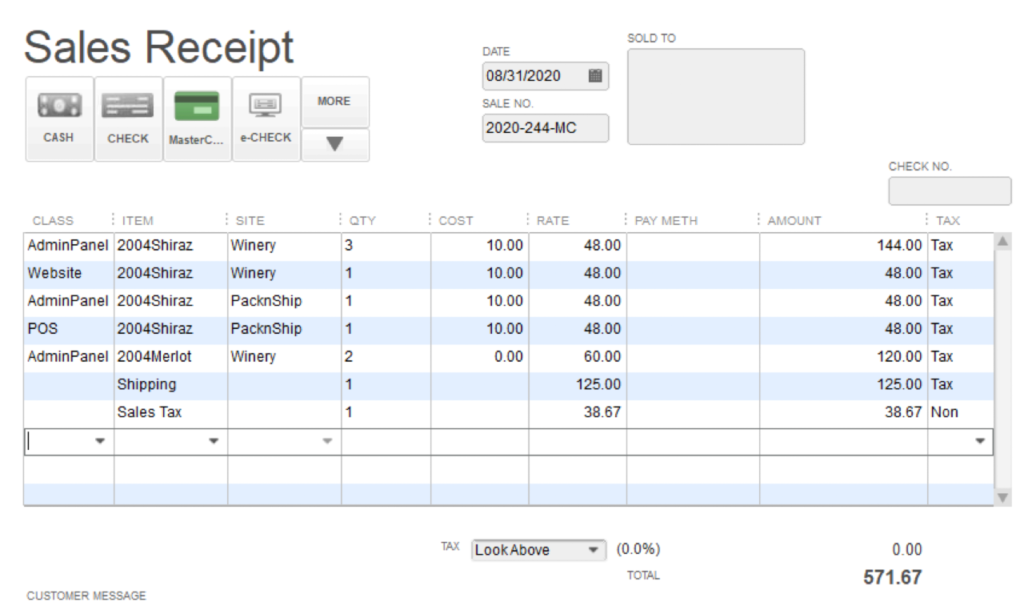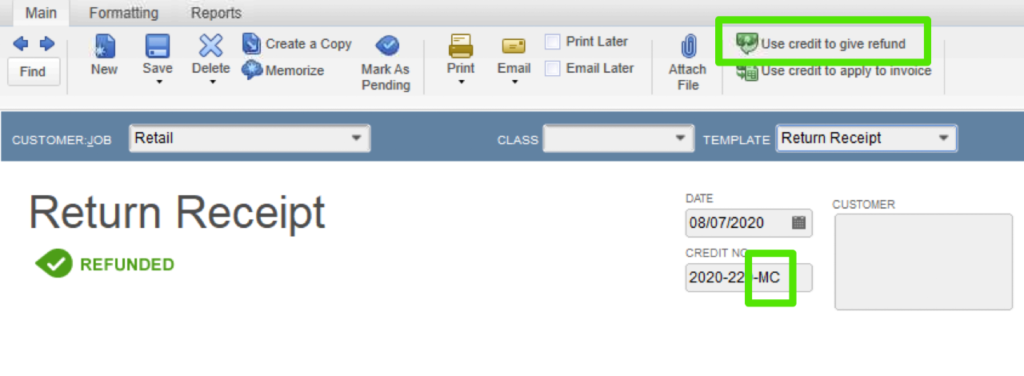WGits QB allows you to either batch every transaction over to QuickBooks or batch by the entire day by summarized aggregate orders. Here’s some information about how the Summary Batch feature works in WGits QB.
The default setting to migrate transactions into QuickBooks is to send over each individual transaction along with its order number. With the Batch Summary tool, you’ll be sending a single order for each day for each payment method.
For example: Let’s say that you made many sales for January 15th 2021 and were paid by MasterCard, Cash, and Visa. What will show up in QuickBooks would be just three orders: one aggregate for MasterCard, one aggregate for Cash and one aggregate for Visa.
The order numbers appear like this:
[Profile Prefix]-[YY][#Day of Year]-[Pay Method]
So a MasterCard order placed on the 15th of January 2021 would be: M-2115-MC
A Visa order placed on the 31st of December 2021 would be: M-21365-V
Common Payment Method Abbreviations used:
C=Cash
V=Visa
MC=MasterCard
AX=AmericanExpress
D=Discover
J=JCB
OA=OnAccount
CR=Credit
T=Terminal
GC=GiftCard (Only will appear on orders that are entirely paid for by Gift Card – Learn more on how Gift Cards work)
Z=ZeroDollarInvoice
Because WGits has a Payment Method Mapper, you’ll also be able to control how the abbreviations will look depending on how you name your Payment Methods in your Accounting Software. For example if you have Cash as a default payment method, it will go over to QuickBooks as: M-21365-C. If you have customized your credit card types to all go to one single payment method called “Credit Card”, then that will change the Summary Batch order number to be: M-21365-Cr.
There’s some automatic behavior here as well, If you already have a payment method that uses the C letter for payments, then the next payment methods that start with a C will append a second letter to account for this. For example, Check payments coming through WGits will look like this: M-21365-Ch.
Below is an example of multiple products being placed through multiple sales channels, such as tasting room, website, and back-office administration panel. You will also see multiple inventory sites being utilized here.
All the sales for the day for this payment method will be placed into this one aggregate order. The day the order is marked as completed and paid is the day this order is assigned to.

Benefits:
An advantage of this solution the potential of saving a lot of time when using the “Make Deposits” feature in QuickBooks. Instead of trying to total up hundreds of orders, this number should be the total for all successful sales for the day.
Another benefit is reconciliation. Look up in your gateway reports to confirm what money has gone into the gateway on a given day. This should match all the payment methods except for cash.
Yet another nice feature here is the ability to easily identify what payment method was used for Refunds (Credit Memos in QuickBooks).
Refunds:
When you get a Credit Memo, you would click the “Use credit to give refund” button. The benefit here is it shows the payment method abbreviation in the Credit Number field. See below:

Cautions:
If you use ShipCompliant, please ensure that you have resolved all quarantine issues where an order is not compliant before the end of the day if at all possible. If an order remains in quarantine through the night the payment will be collected on that initial day of the order, but it won’t be marked as completed until the day you resolve the quarantine issue.
This means the order could appear in QuickBooks with the day that the order was completed, not the day it was paid. This can cause challenges with reconciliation and can make it take more time. For WGits users on WineDirect, there is a toggle to control how you wish to pull sales across, either by paid date or by completed date. You’ll want to make sure you’re basing it on Paid date in most circumstances.


